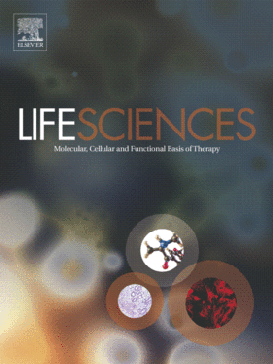
“Cannabinoids have been used for many centuries to ease pain and in the past decade, the endocannabinoid system has been implicated in a number of pathophysiological conditions, such as mood and anxiety disorders, movement disorders such as Parkinson’s and Huntington’s disease, neuropathic pain, multiple sclerosis, spinal cord injury, atherosclerosis, myocardial infarction, stroke, hypertension, glaucoma, obesity, and osteoporosis.
Several studies have demonstrated that cannabinoids also have anti-cancer activity and as cannabinoids are usually well tolerated and do not produce the typical toxic effects of conventional chemotherapies, there is considerable merit in the development of cannabinoids as potential anticancer therapies.
Whilst the presence of psychoactive effects of cannabinoids could prevent any progress in this field, recent studies have shown the value of the non-psychoactive components of cannabinoids in activating apoptotic pathways, inducing anti-proliferative and anti-angiogenic effects.
The aforementioned effects are suggested to be through pathways such as ERK, Akt, mitogen-activated protein kinase (MAPK) pathways, phosphoinositide 3-kinase (PI3K) pathways and hypoxia inducible factor 1 (HIF1), all of which are important contributors to the hallmarks of cancer.
Many important questions still remain unanswered or are poorly addressed thus necessitating further research at basic pre-clinical and clinical levels. In this review, we address these issues with a view to identifying the key challenges that future research needs to address.”
http://www.ncbi.nlm.nih.gov/pubmed/26852955
http://www.thctotalhealthcare.com/category/cancer/
 “Endocannabinoids are bioactive lipids that modulate various physiological processes through G-protein-coupled receptors (CB1 and CB2) and other putative targets. By sharing the activation of the same receptors, some phytocannabinoids and a multitude of synthetic cannabinoids mimic the effects of endocannabinoids.
In recent years, a growing interest has been dedicated to the study of cannabinoids properties for their analgesic, antioxidant, anti-inflammatory and neuroprotective effects. In addition to these well-recognized effects, various studies suggest that cannabinoids may affect cell survival, cell proliferation or cell death. These observations indicate that cannabinoids may play an important role in the regulation of cellular homeostasis and, thus, may contribute to tissue remodelling and cancer treatment.
For a long time, the study of cannabinoid receptor signalling has been focused on the classical adenylyl cyclase/cyclic AMP/protein kinase A (PKA) pathway. However, this pathway does not totally explain the wide array of biological responses to cannabinoids. In addition, the diversity of receptors and signalling pathways that endocannabinoids modulate offers an interesting opportunity for the development of specific molecules to disturb selectively the endogenous system.
Moreover, emerging evidences suggest that cannabinoids ability to limit cell proliferation and to induce tumour-selective cell death may offer a novel strategy in cancer treatment.
This review describes the main properties of cannabinoids in cell death and attempts to clarify the different pathways triggered by these compounds that may help to understand the complexity of respective molecular mechanisms and explore the potential clinical benefit of cannabinoids use in cancer therapies.”
https://www.ncbi.nlm.nih.gov/pubmed/28425013
“Endocannabinoids are bioactive lipids that modulate various physiological processes through G-protein-coupled receptors (CB1 and CB2) and other putative targets. By sharing the activation of the same receptors, some phytocannabinoids and a multitude of synthetic cannabinoids mimic the effects of endocannabinoids.
In recent years, a growing interest has been dedicated to the study of cannabinoids properties for their analgesic, antioxidant, anti-inflammatory and neuroprotective effects. In addition to these well-recognized effects, various studies suggest that cannabinoids may affect cell survival, cell proliferation or cell death. These observations indicate that cannabinoids may play an important role in the regulation of cellular homeostasis and, thus, may contribute to tissue remodelling and cancer treatment.
For a long time, the study of cannabinoid receptor signalling has been focused on the classical adenylyl cyclase/cyclic AMP/protein kinase A (PKA) pathway. However, this pathway does not totally explain the wide array of biological responses to cannabinoids. In addition, the diversity of receptors and signalling pathways that endocannabinoids modulate offers an interesting opportunity for the development of specific molecules to disturb selectively the endogenous system.
Moreover, emerging evidences suggest that cannabinoids ability to limit cell proliferation and to induce tumour-selective cell death may offer a novel strategy in cancer treatment.
This review describes the main properties of cannabinoids in cell death and attempts to clarify the different pathways triggered by these compounds that may help to understand the complexity of respective molecular mechanisms and explore the potential clinical benefit of cannabinoids use in cancer therapies.”
https://www.ncbi.nlm.nih.gov/pubmed/28425013




